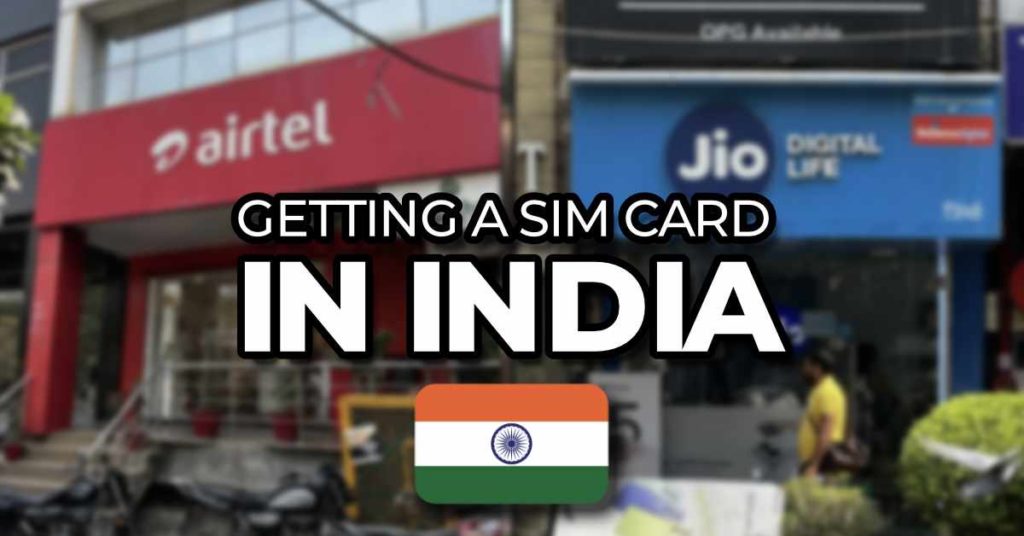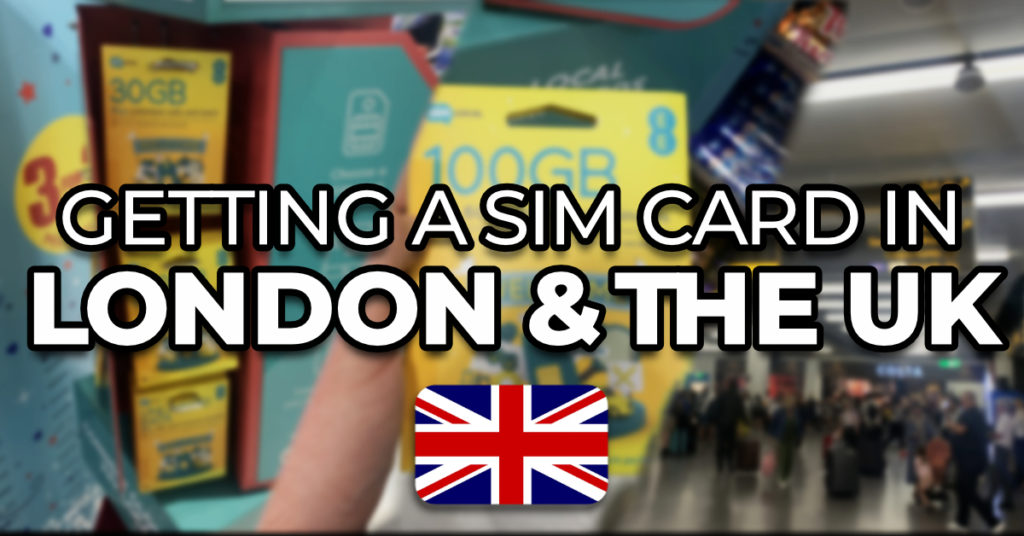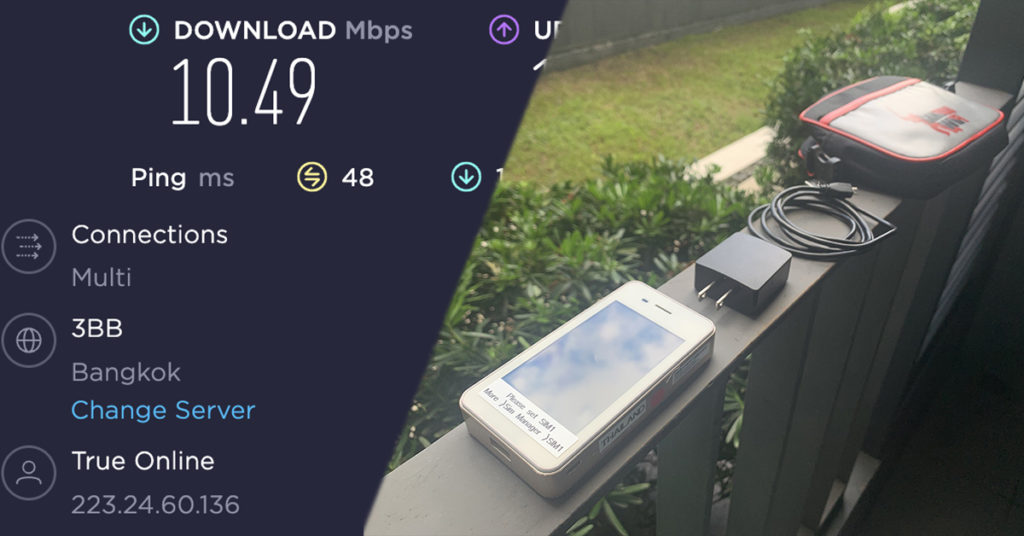Getting overwhelmed with all the mixed information thrown at you when it comes to buying a SIM card in India? Or people trying to scam you into buying a useless network connection? In this guide, I’m here to simplify the process for you. No frills, no fuss – just straightforward advice on securing the ideal SIM card in India, while keeping those hard-earned rupees safe in your pocket.
But how do I know? Well, staying in the country for over a year, I’ve navigated the difficulties and regulations involved in obtaining a SIM card as a foreigner in India. Through my experiences, I’ve discovered the most efficient ways to obtain the best connection that works for your needs as a long or short term traveller or digital nomad in India.
Here’s how to get a SIM card in India:
- Get a SIM Card at the airport – Avoid the hassle/scams.
- Look for the Airtel Booth – The Airtel booth in Delhi Airport is located at T3 arrival area between exit 4 and 5. In Mumbai, it could be found at the level 2 arrival area. All Airtel shops within the airport are open 24/7.
- Take the necessary documents along – Your passport, Indian Visa, a passport-sized photograph, and proof of residence in your country.
- Fill in the documents – They will ask you to fill in some documents for verification.
- Get your photograph taken – The employee will then take your photograph.
- Purchase your prepaid SIM plan – Only one plan is available at the airport – 1.4 GB 5G internet per day, with unlimited calls within India for 60 days.
- Get it activated – Give the employee your phone and they’ll activate it for you.
- Pay for your SIM – You’d pay ₹800 for the SIM (prices are subject to change).
- You’re good to go!
Map of New Delhi Airport to help you purchase on arrival:
This is the only airport we recommend actually getting a SIM card from the airport, because it’s notoriously hard for foreigners to get SIM cards in India and there are so many scams about it’s best to have access to data right out of the airport.
The first time I arrived in India, I didn’t get a SIM from the airport in New Delhi. I personally opted to go to the Airtel store in the center. However, they will specifically ask you for an Indian friend or family member’s number to set up a pre-paid SIM, so if you don’t have this, it’s often not possible. The total plan cost 300 rupees for 30 days, so it’s considerably cheaper than the airport, but if you don’t have an Indian friend who can help you’re pretty screwed.
Please note: when buying a SIM from the airport, make sure that you get the right change back. They tend to ‘mistakenly’ keep some of it and distract you in the hope that you won’t notice it. I‘ve spoken to multiple people who have mentioned this, as well as having experienced it myself.
Which Is The Best SIM Card To Get In India?
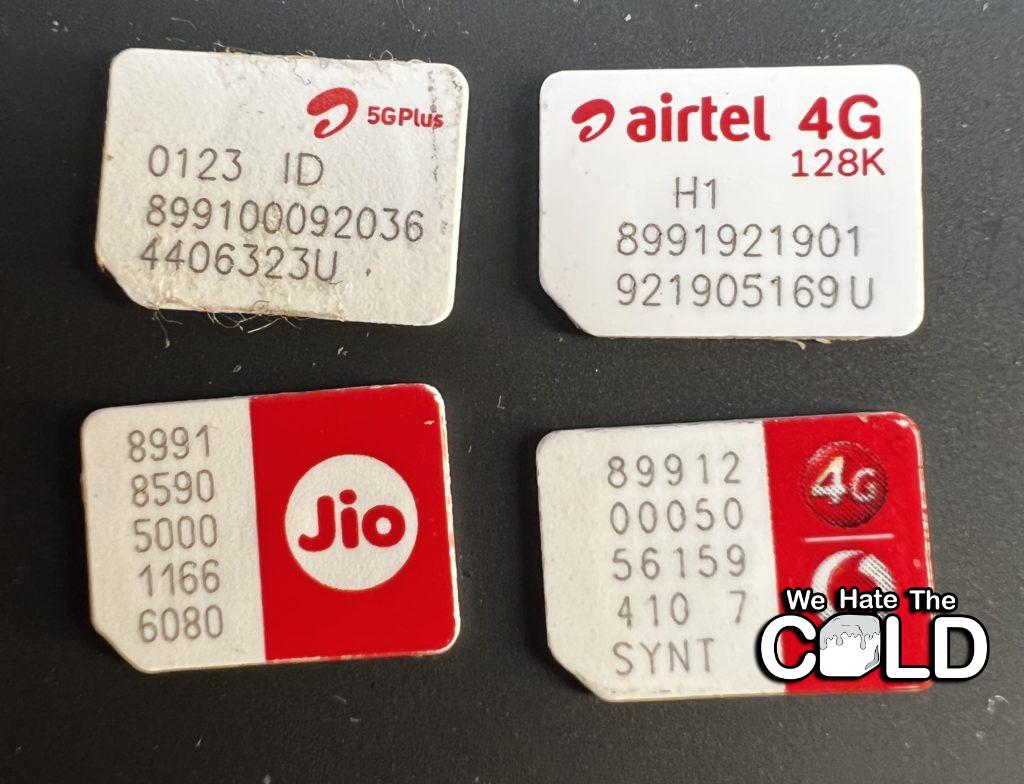
The best SIM card in India is Airtel, but Jio is a good option, too. Airtel is the better option because it’s much easier to get your hands on, with a more convenient in-store process. Get the SIM card at the airport from the Airtel booth. The plan will be 1.4GB 5G internet per day, plus unlimited calls within India for 60 days.
In India, there are only two Telecom providers that offer 5G internet: Airtel and Jio. Jio has the best coverage, is cheaper, and has better plans. Unfortunately, there are no Jio stores in the airport, as the brand primarily focuses on Indian customers. Jio doesn’t truly support foreigners getting a SIM card and always asks for a local address and ID. They do have one option to obtain a SIM card being a foreigner but this is a long, arduous process that can take a minimum of 25 days to complete.
On the other hand, Airtel offers good coverage and 5G internet and doesn’t necessarily ask for a local ID or address, though the Indian verification process – or KYC – still applies. They also have a 24/7 stall at the airport where one can get a SIM card without too much hassle. If you want to get one outside the airport, Airtel offers a few options to do that, too, like the official Airtel stores found across major cities.
Considering all that, I’d recommend getting an Airtel SIM card, as the process is more convenient and less time-consuming, the coverage is almost as good as Jio, and the price difference is minor.
Please note: When you have bought your SIM and you’d like to top up or add more data/validity, you’d have to go to the local provider’s store, unless you’re able to pay through Google Pay or UPI online at the official website of the provider. Another idea is to ask a local friend or hotel receptionist to recharge it for you, and you can pay them back in cash.
Getting A SIM Card At India’s Airports
To buy a SIM card at any of the airports in India, you need cash, so it’s important to withdraw rupees before you do that. At the Indira Gandhi International Airport T3 in Delhi, the SBI ATM is located right next to the Airtel Booth, which can be found between exits 4 & 5 at the arrival hall. At the Chhatrapati Shivaji Maharaja International Airport T2 in Mumbai, there are multiple ATMs right at the arrival hall.
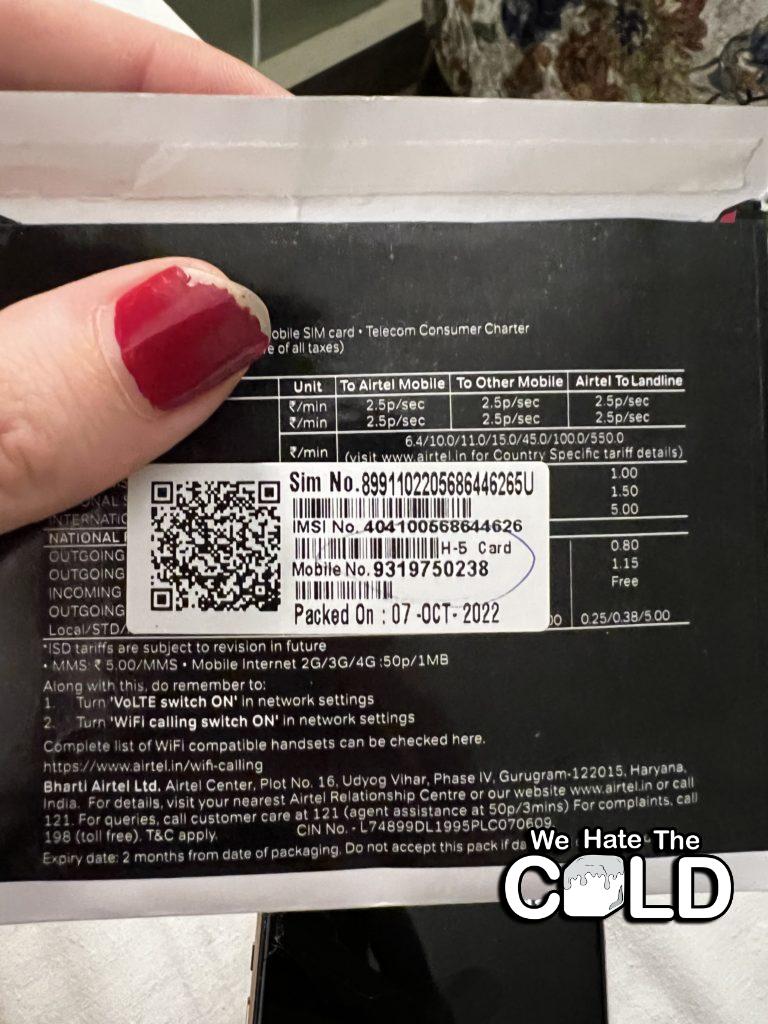
Getting a SIM card at the airport in India is one of the best options. At the airport, they’re used to dealing with foreigners and have the entire procedure at hand, whereas a local retailer outside the airport might require a local address and ID that you won’t be able to provide in most cases, coupled with the possible complication of never having dealt with a foreign customer before.
On our visit to the Airtel shop in New Delhi, we were told we needed an Indian number of a family member or friend to set it up. Luckily I have some friends who helped, but I understand many traveling do not have this.
Another reason is the scammers, and yes, they’re as bad as you’ve heard.
When leaving the airport, there are many people waiting to earn a few extra rupees out of the unsuspecting tourists. Having a SIM card at hand before you leave the airport is a great way to avoid that, as you’d be able to, for example, check where your hotel is, and how far it is, stay in touch with them, or even call them to crosscheck information.
You’d be surprised how deep the scams go in India and how well-designed they are. We had a driver call the hotel we booked, I checked the number, and he must have spoofed his phone to go through to someone else in on the scam. They had top Google news stories backing up their “fake news” about COVID and sectioned off areas, and there is a ring of Tuk Tuk & Taxi drivers as well as what look like legitimate organizations in on the scam because the commissions are so high.
Thankfully we did not fall for any scams and didn’t purchase, but we met many tourists who did. A phone will help you massively in these situations to see if they are full of s**t or not.
Even though the airport booths are slightly pricier with fewer options than outside, it might spare you a lot of hassle. Additionally, it’s good to have a SIM before leaving the airport to avoid getting scammed and crosscheck information. In my opinion, it’s definitely worth those extra rupees spent.
Important to note: Once the SIM is installed in the phone, it can take some time to get activated. Double-check with the retailer if everything is in order and how long it would take to get it active. It’s very important to do this as once you leave the airport, you can’t get back inside to get to the same store (this is the protocol at every Indian airport). If there’s a problem, you’d have to go to a local retail store to solve it.
Where Are The SIM Card Stands Located?
At the Indira Gandhi International Airport Terminal 3 in Delhi, go through immigration, get to the baggage belts, and head to the exit. There, look for exits 4 & 5, where you’d find the Airtel SIM stand. At the Chhatrapati Shivaji Maharaja International Airport Terminal 2 in Mumbai, go through immigration, head to the baggage belts, and exit through customs to get to the arrival hall. There’s an Airtel Booth next to exit B. Airtel is the only provider available at both the airports and the stands are open 24/7.
How Much Do They Cost?
There aren’t many choices for buying a SIM card at the airport, as there’s only one plan available:
| NETWORK | DATA | MINUTES | VALIDITY | PRICE |
| AIRTEL | 1.4GB 4G/5G internet per day | Unlimited calls within India / 100 SMS a day | 60 days | $9.62 |
Please note: The plan and price mentioned are subject to change.
Shops That Sell SIM Cards In India
Most stores will ask you to provide a local address proof and ID, which you’re unlikely to have. However, there are still some stores you can try your luck at, like Airtel stores that offer SIM cards to foreigners against their foreign ID and local accommodation address. Or, if you have a nice local friend who is willing to get one for you, do note that this option isn’t strictly legal.
Here is a list of shops you can try to get a SIM:
- The network providers’ own store
- Airtel
- Jio
- (Some) hotels/hostels
- Small local phone shops
- The official network provider website
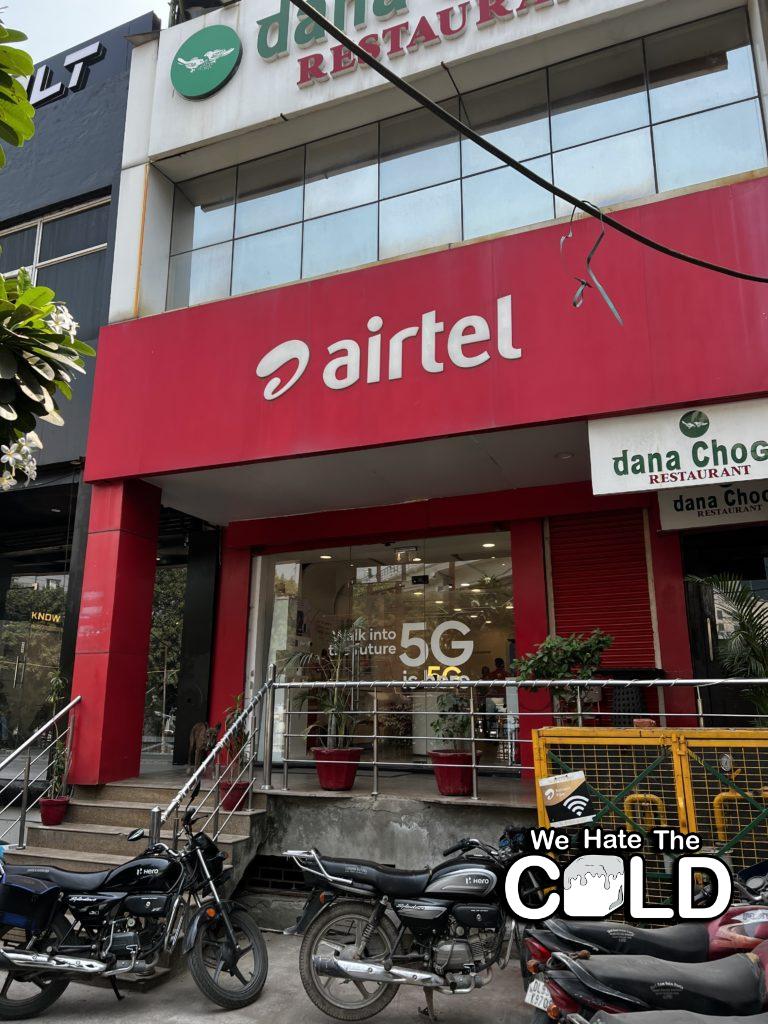
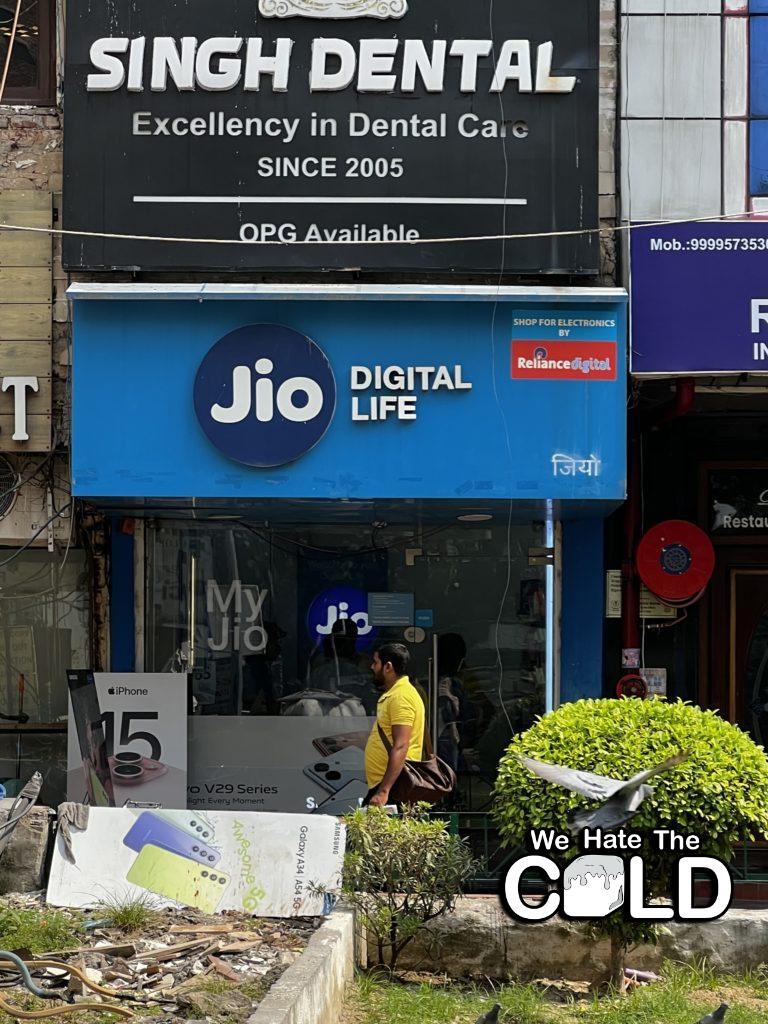
Buying a SIM through the network provider’s local store – the best option is just going to an official Airtel retail store. You can also try your luck at a Jio store, though you’re likely to end up disappointed. You can easily locate them by typing ‘Airtel/Jio store near me’ in Google.
Personally, I’ve obtained an Airtel SIM from a local retail store outside the airport twice, and both times they did everything according to the process and got me a SIM. Probably good to mention that this was in Mumbai and Rishikesh – two cities where tourists are common – though it might get more complicated in the smaller towns and villages you might be visiting on your trip. At the store, you’d have more choices of plans, and you can go for prepaid and postpaid options. If you go for postpaid, note that you’d have to use the connection for at least four months as a matter of company policy.
For Jio, I’ve tried at their official stores in Rishikesh and Delhi, but without success, as they require an Indian address and passport. If you really insist on getting a Jio connection, it’s possible to go through a long process that might take a minimum of 25 days, though the local verification KYC process still applies.
You can also ask a local friend to get a Jio connection for you, but this is technically illegal. I got mine through a helpful local friend.
Buying a SIM through your Hostel/Hotel – You can buy a SIM through your hotel or hostel, though don’t forget to check if they offer this service beforehand. It’s a great option, but they might charge an extra fee. Just ask the receptionist, and someone from the chosen provider will visit the accommodation to complete the paperwork with you. You will still need to provide your passport, Indian visa, and a passport-sized photograph.
Buying a SIM through a local phone store – This option doesn’t really apply to the big cities such as Mumbai or Delhi, but when you go to smaller towns in the more rural areas of India, these kinds of stores are pretty much the only option you might have to get a SIM, as there are no Airtel or Jio stores to choose from. Personally, it’s better to avoid this option, as it depends on whether they offer SIMs to foreigners from store to store.
Buying a SIM through the official network provider’s website – You can also order a SIM from the official website of the network providers. You’d need an Indian Phone number to apply for this, though, which you can probably obtain with the help of your ho(s)tel. You’d be asked to fill in a local address to complete the verification KYC process, which would be the same as the address you’re staying at. The verification process is usually done by an employee of the network provider, so it’s largely a hassle-free process. You can pay through the official website with your debit/credit card, or in cash to the representative, depending on the availability of that option.
Getting A SIM Before Arriving in India – What Are My Options?
If you want to get a SIM before entering India, you have one option:
- E-SIMs – A virtual SIM that any iPhone newer than 2018 and any Samsung or Google Pixel newer than 2020 can use.
- Prepaids SIMs – A physical SIM you can buy before entering India
An e-Sim is a virtual connection that has some advantages over its traditional counterparts, as it provides you with a working connection as soon as you land – along with the advantage of your original SIM card still being active and running – and save you from all the hassles of getting a new connection for every destination you go to. However, this is much more expensive than all of the other available local options. For one, you won’t have access to a local number and won’t be able to make calls or text within the country you’re in. According to reports and studies, mobile data plans in India are among the cheapest in the world.
Personally, I’d opt for getting a SIM in the country, as you’d be getting so much more for the money you pay, and you have many easy options to get it like buying it right at the 24/7 shops at the airport, your hotel, or a local retailer shop.
How about E-SIM Cards?
The main providers for eSIMs in India are:
- Airalo
- Alosim
- Holafly
- Nomad
- AIS
The best option for India is Airalo, with Nomad being a close second, as it’s the cheapest, has the best coverage, and offers multiple plans to choose from. Holafly and AIS have just one option to choose from, and Alosim is slightly more expensive than Airalo and Nomad. Nomad has E-SIMs specifically for India, and offers APAC eSIMs which also cover other countries such as Thailand, Malaysia, Nepal, Sri Lanka etc.
Airalo is the best option. They offer plans of 7, 15, and 30 days with up to 20GB internet. It’s also the cheapest option among its competitors. You can opt for an e-SIM specifically for India, or get a global one in which India is also included.
Airalo
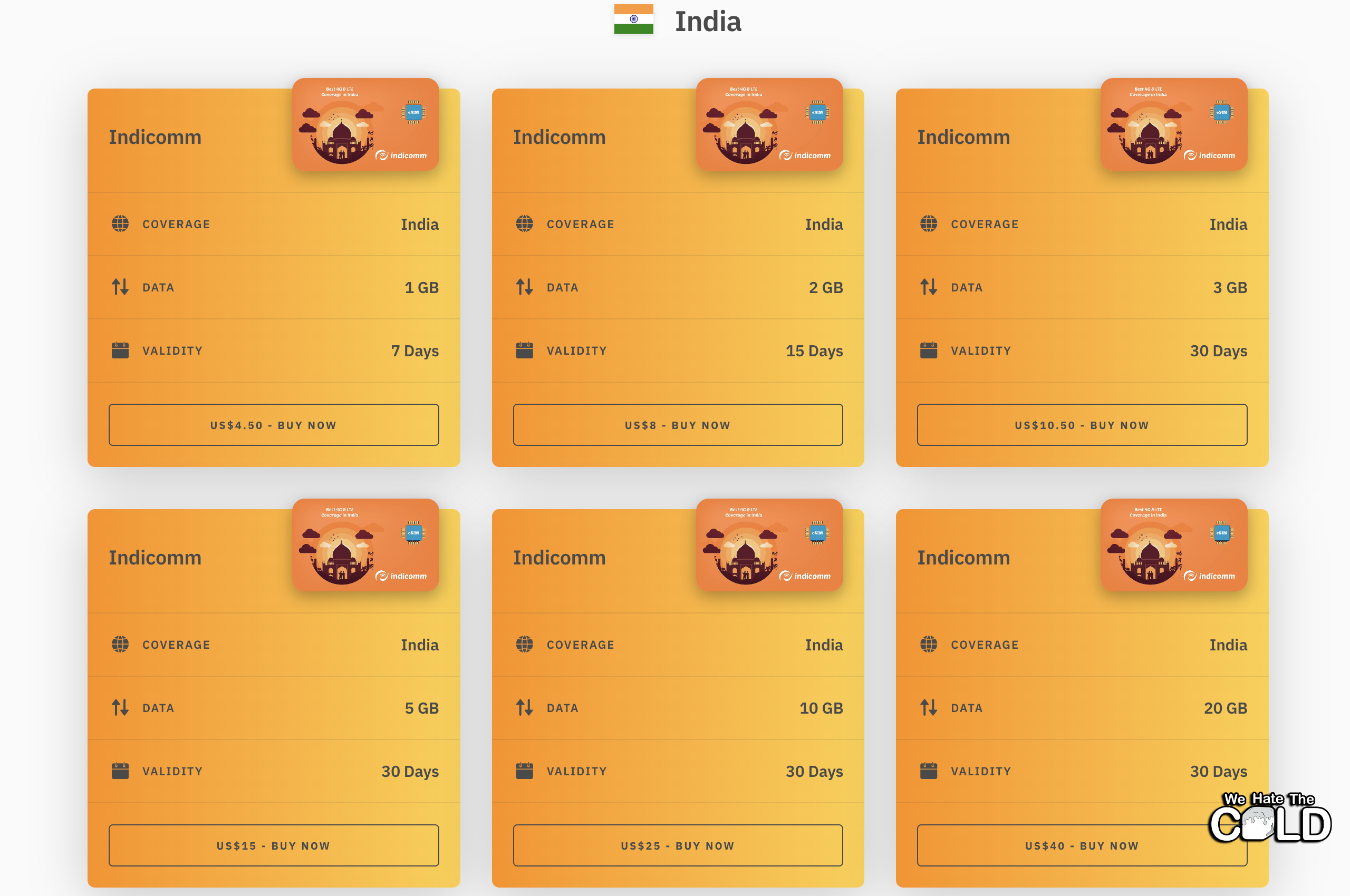
Airalo offers local eSIMs specifically for India and global eSIMs to be used in about 130 countries. They have plans of 7, 15, and 30 days, starting from 1 GB up to 20 GB internet, with their most expensive plan offering 20 GB/month for $40. You get full access (4G/LTE) to the Airtel India Network. You can pre-purchase this eSIM months before you arrive, and it will start working once you have it enabled it and reach India.
Unfortunately, you can’t call or text with the Indicomm option – it’s a data-only eSIM, and you won’t get an Indian phone number, either. There also is no 5G access and no unlimited data plans.
Nomad
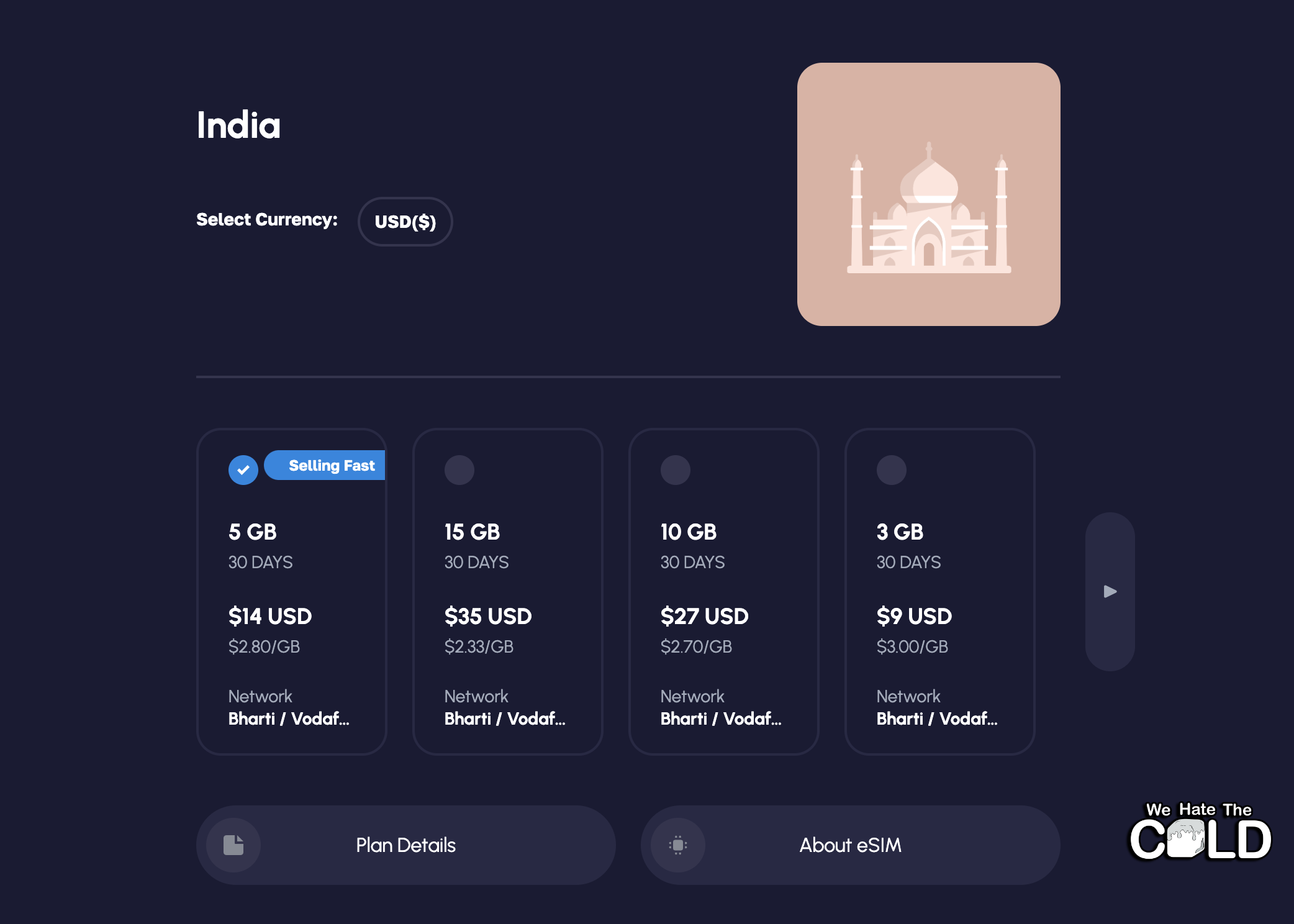
Nomad offers plans for 7 or 30 days, starting from 1 GB to 15 GB. The most expensive plan offers 15 GB/month for $35. Nomad’s plans are slightly cheaper than Airalo. Besides the specific plans for India, they also offer APAC e-SIM cards, which could be used for India and other countries in Asia such as Sri Lanka, Nepal, Thailand etc. With Nomad, you get full access (4G/LTE) to the Airtel India Network, and the eSIM validity starts after 30 days of purchase, and not after you start using it in India, like Airalo. This means that you should avoid buying a Nomad eSIM too early, as it will self-activate after 30 days regardless of where you are.
If you are going to Thailand or other Asian countries, it can be better to get a prepaid SIM on arrival. For instance, in Thailand, SIM cards are extremely cheap compared with E-SIM plans, but don’t have the same ease-of-use benefits.
Unfortunately, you can’t call or text with the Nomad India eSIM – it’s a data-only eSIM. You won’t have an Indian phone number, either. There is no 5G access and no unlimited data plans.
What’s The Benefit Of An E-SIM?
You can use you e-SIM with your original SIM, which means you won’t loose it while moving around. You’d also still be able to get important OTP’s on your original phone number, plus you no longer have to deal with the new SIM registration process in India.
When you travel to multiple countries and plan to stay in each one for a relatively-short period of time, it’s easier to have a single SIM connection and not risk losing your original SIM card. However, if you’re travelling around for longer periods of time or are on a tight budget, buying a local SIM can save you some cash, as network connections are so much cheaper in countries like India.
Pre-Paid SIMs
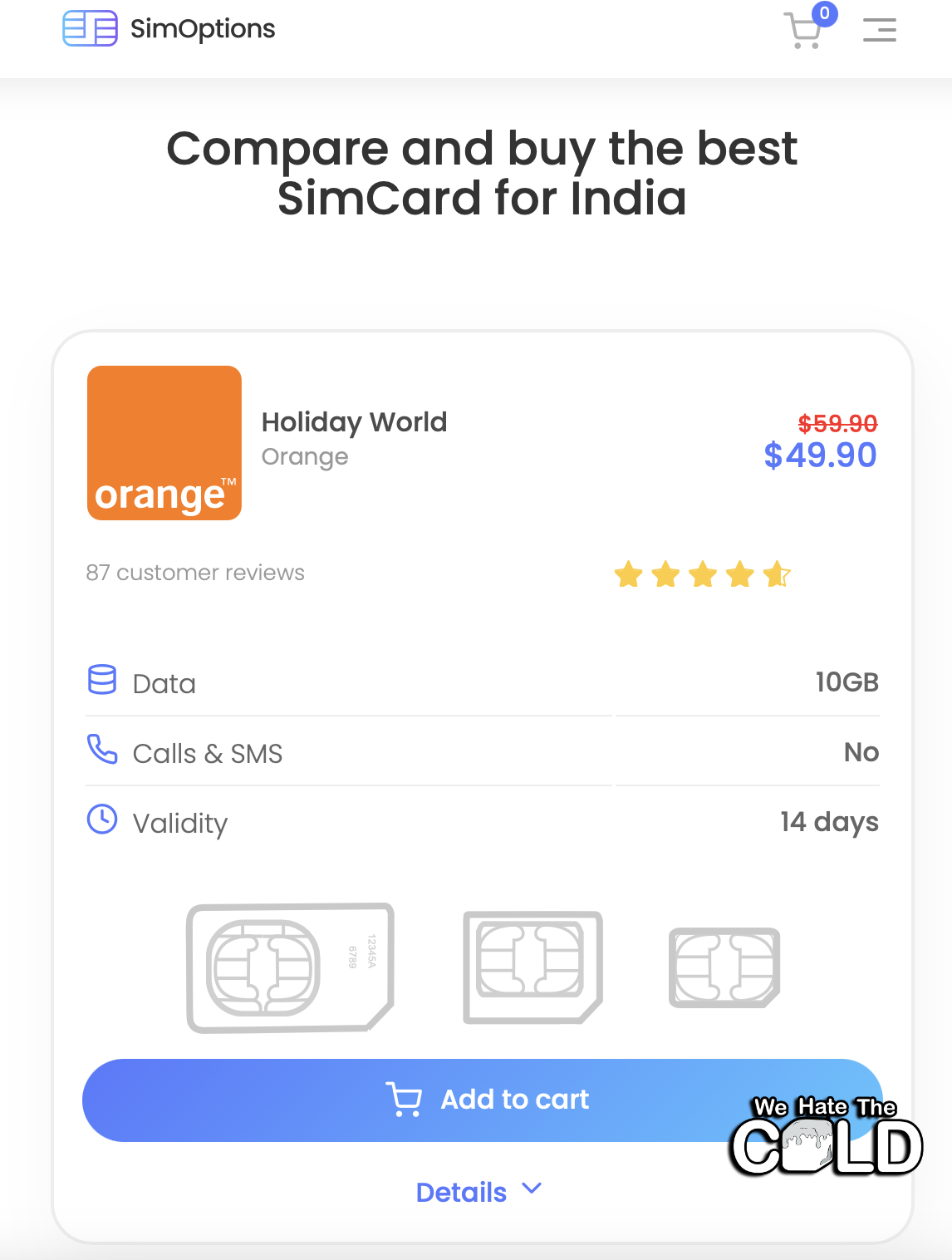
There aren’t many options if you want to obtain a prepaid connection for India outside the country. If you really want to do that, SimOptions offers one, which can be purchased through their official website and costs $49.90 for 10 GB data/14 days. I wouldn’t recommend getting it, though, as they’re way more expensive than local SIMs or even eSIMs, and there aren’t many available options specifically for India. If you have the extra money and find the convenience more valuable, it could be an option.
Which SIM Provider Is Best?
The best SIM providers in India (in order):
- Airtel – Fastest network and best network quality. Easiest to obtain for foreigners.
- Jio – Cheapest plans, best coverage. Not as easy to get for foreigners compared to Airtel.
Although there are a total of five network providers in India, Airtel and Jio are the only two with 5G networks. Both are similar in value for money, but there are still some minor differences between the two.
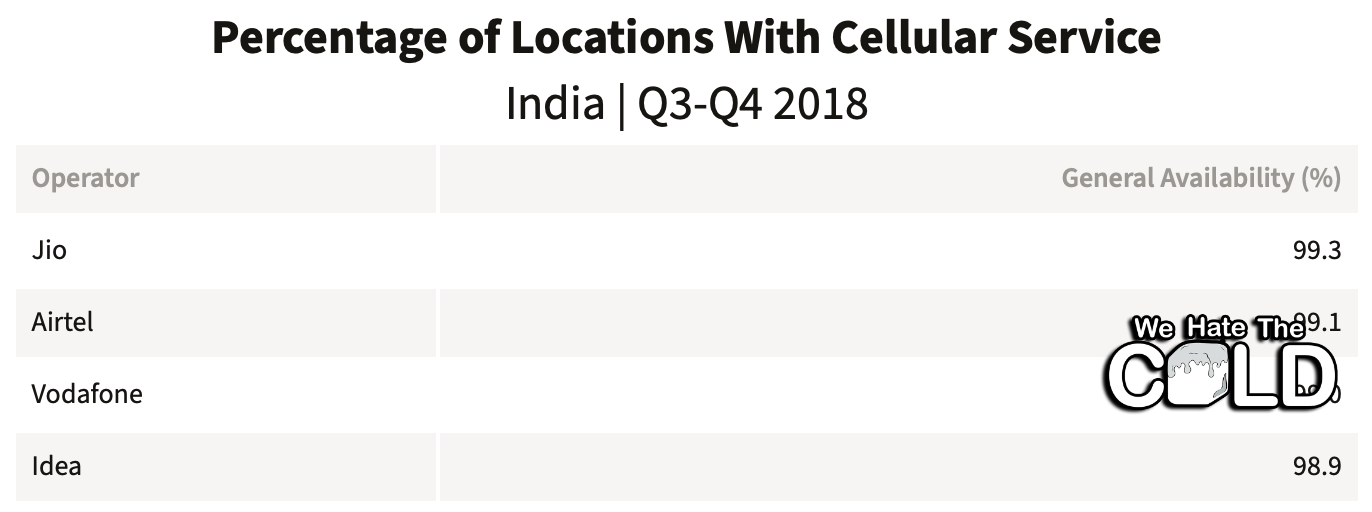
Please note: While other networks exist, they have no options available for travelling foreigners. Airtel largely has a monopoly on the SIM card industry for foreign nationals in India, as even Jio makes it complicated for foreigners looking to get an Indian connection for their travelling needs.
Airtel
Airtel is the best SIM provider in India, as they have the fastest network and the best network quality. It’s also very easy to get a SIM card from Airtel, and you can do it with your passport and Visa at one of their many Airtel stores found across major cities. The Airtel stall at the airport is a good option, too, but note that it only offers one plan compared to the retail stores, and is slightly more expensive than it’s retail counterpart.
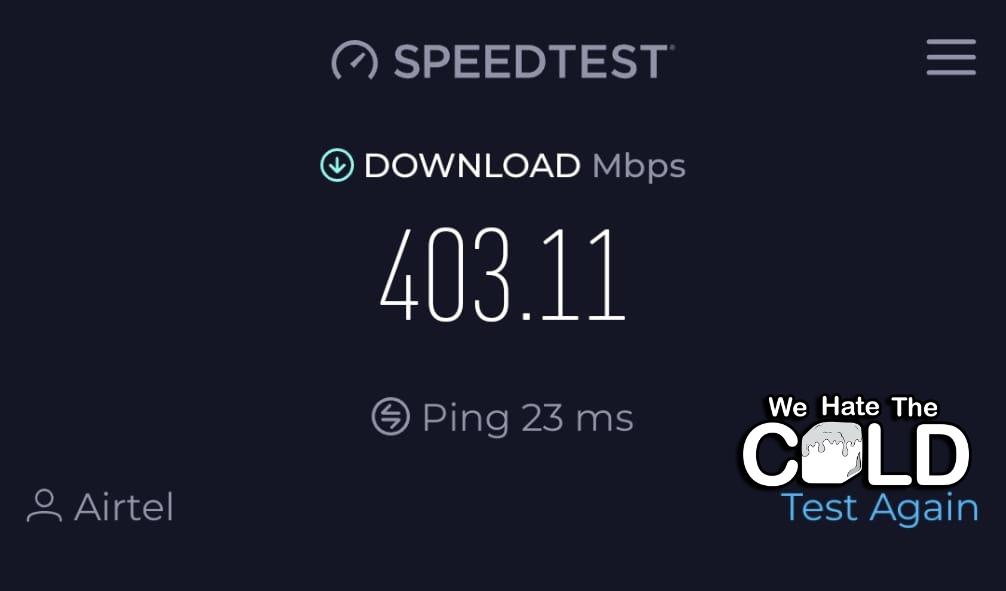
According to Airtel, speeds on their 5G network could reach up to 20 gigabytes per second. While I never got close to that, it was still fast enough to qualify as a capable 5G network connection. This test was done with full range in Noida – a large city near India’s capital Delhi. It likely won’t be as fast in the more rural parts of India, though the coverage is still one of the best in the country. Personally, I’ve only had a good experience with Airtel – the network is fast, offers competitive plans at affordable prices, and is the only network provider in the country that gives easy access to foreign nationals. Currently I’m using the 2GB/day plan with unlimited calls within India for ₹359/month ($4.31). You can buy an Airtel SIM at any of their official retail stores or their stall at the arrival section of the airport.
Here is the coverage map of Airtel in India:
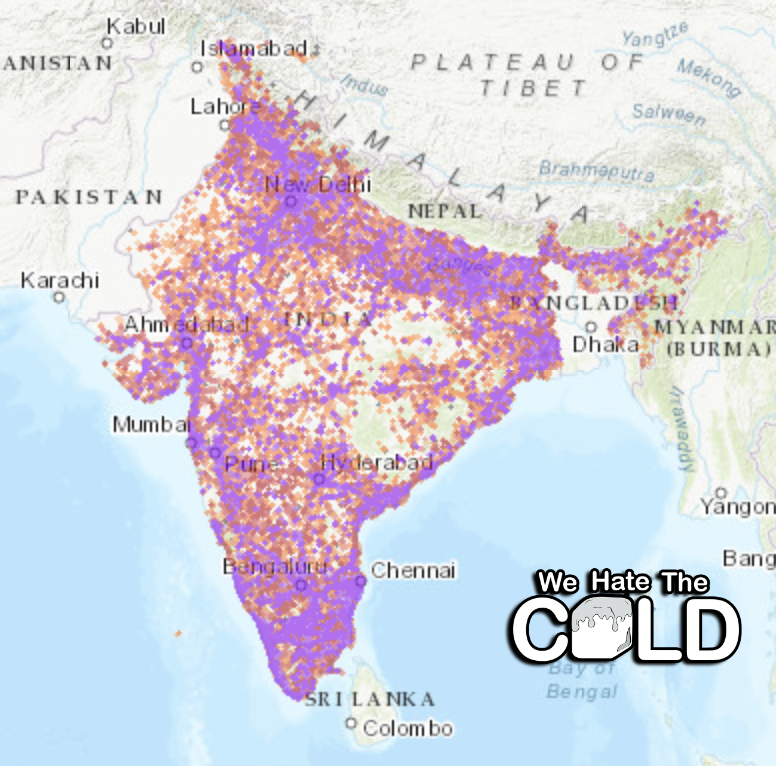
You can see the full coverage map for Airtel in India here.
Jio
Jio is the only other network provider providing 5G access across India. It has the best coverage in the country, cheapest plans, and is in general one of the best network providers available. For a foreigner, however, they don’t provide SIM cards that easily, as it’s primarily aimed at providing Indian nationals with working mobile connections. Their verification process for foreigners can take up to 25 days, which is very inconvenient.
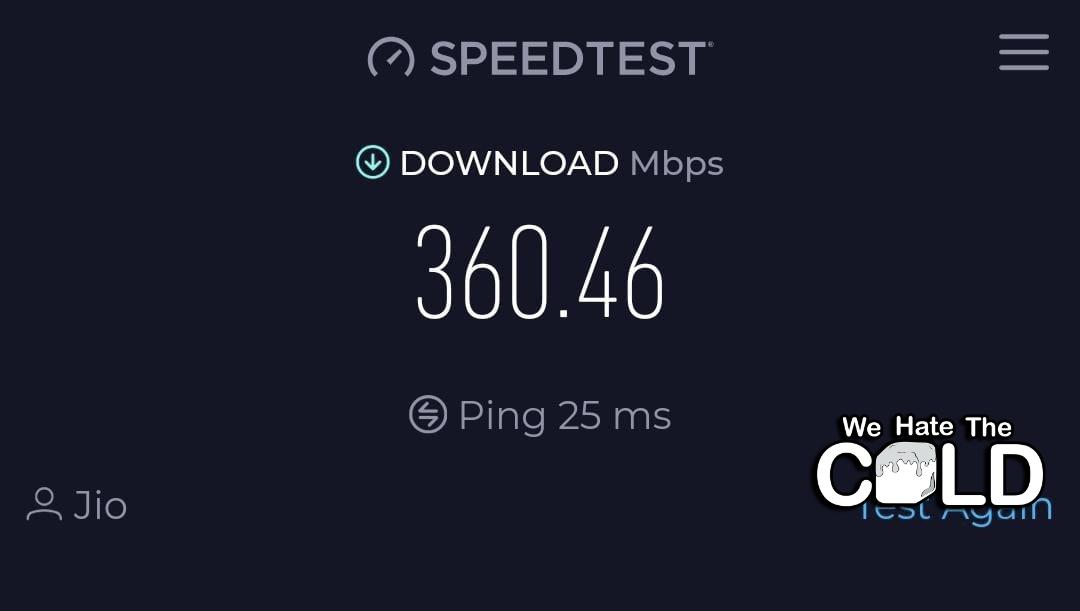
Jio claims a maximum speed of 2 Gbps with their 5G network. This speed test was taken on their 5G network with 3.5 stripes out of 5 in Noida. As you can see, it’s slightly slower than Airtel. Additionally, Jio’s range is significantly better than Airtel’s. If you see the coverage map, Jio covers most of India including the more rural areas, which is not the case with Airtel. As we mentioned above, Jio also doesn’t provide SIM cards to foreigners that easily, which is a major disadvantage. For purposes of trekking and hiking, I’d recommend trying to get a Jio connection as its coverage is far better in the mountain regions compared to Airtel. Currently, I use the 2.5 GB/day plan by Jio, with unlimited calls within India for ₹349/month ($4.19).
Here is the coverage map of Jio in India:
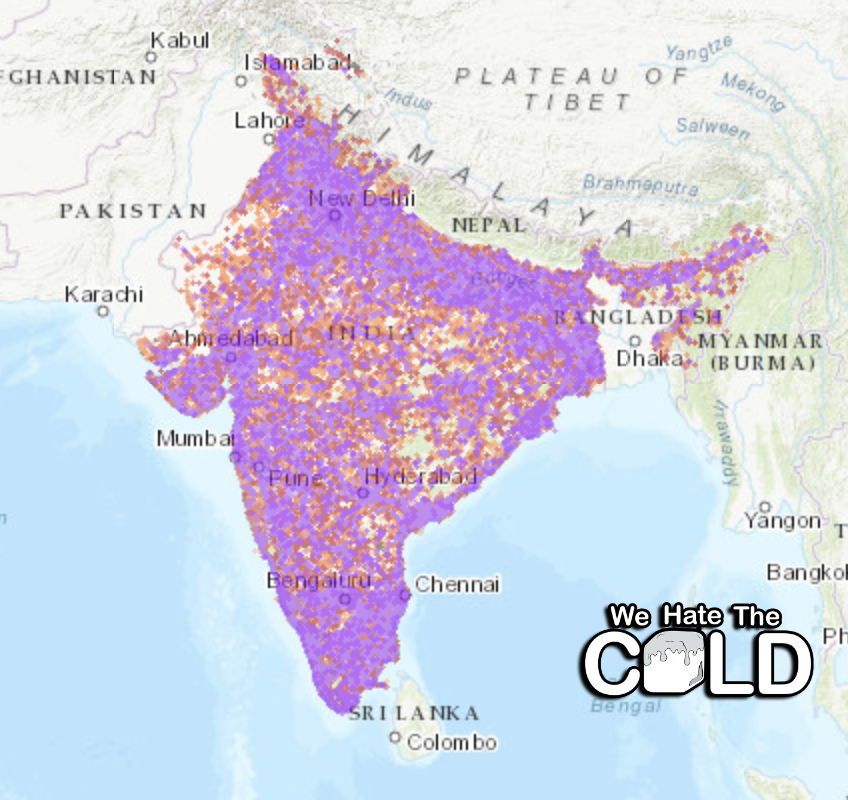
You can see the full coverage map for Jio here.
Summary – The Best Pre-Paid SIM cards for India
Airtel is the most convenient SIM card option with good speed, affordable plans, great coverage, and a smooth verification and purchase process. They are the most accessible option as well, with countless retail stores that could be found in any nook and corner of India’s major cities. If you get it outside the airport, the network offers multiple options – prepaid and postpaid. They have plans offering 3 GB for a month at ₹199 ($2.39).
You are most likely going to end up with an Airtel SIM, as it’s really the only option you’d have depending on your traveling needs.
If you’re going to Jammu & Kashmir or Leh & Ladakh, Airtel’s postpaid SIM is your best option. Airtel gives you the choice between prepaid and postpaid. In some areas in India, only postpaid SIM cards work for security reasons, like the Jammu & Kashmir and Leh & Ladakh regions.
Note: You’d need to use Airtel’s postpaid plans for a minimum of four months according to company policy.
If you’re not planning to head to one of these regions, I’d recommend going for a prepaid connection, as it’s generally cheaper and could be used for shorter periods of time than four months.
If you’re traveling long-term around Asia, the Nomad APAC eSIM is the best option. You can pay per month to use the data in multiple countries, and while it’s more expensive and slower than a local SIM, it’s more convenient than the other options.
In conclusion, I hope this article has provided you with some valuable insights into navigating the Indian telecom scene, potentially saving you from the hurdles you might encounter when seeking a SIM card as a foreign visitor. With the right SIM card in hand, you’re better equipped to make the most of your journey through this culturally and geographically diverse land.

Jytte is a 22-year-old female adventurer from The Netherlands. She loves to fully immerse herself in the local ways of living, going ‘off the beaten path’ to truly experience the countries she visits and their unique way of life. Her wanderlust has taken her to Asia, with a particular focus on India. Here you’ll find her writing about all things India and Asia with a focus on digital nomadding there.
